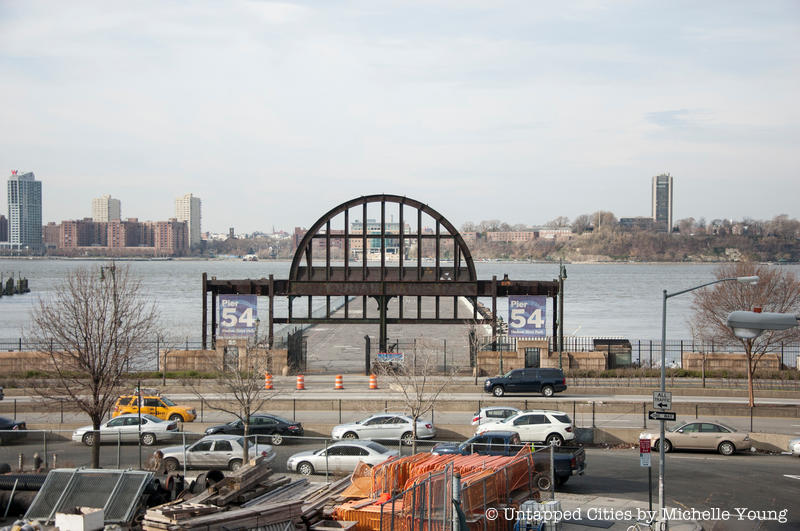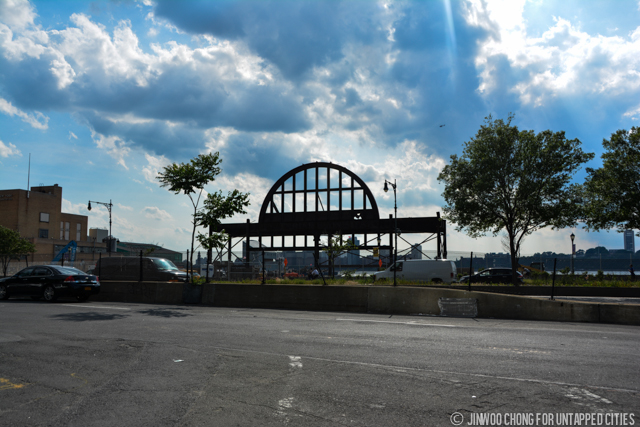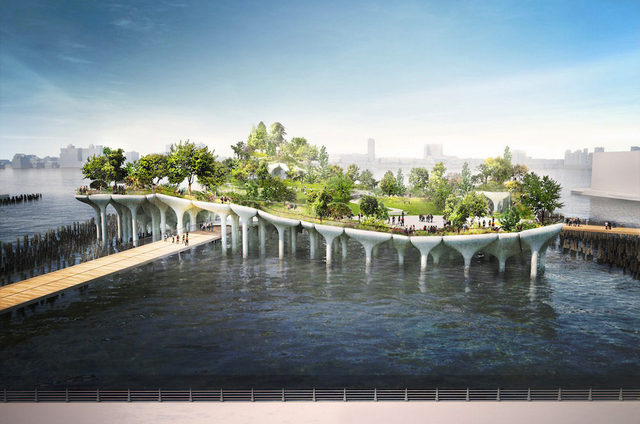Chelsea Piers was once one of New York’s busiest shipping centers at the turn of the 20th century. Not only a popular docking point for passenger ships but a commercial center for travelers and foreigners who docked there throughout its history, the place, opened in 1910, was the city’s first port, a culmination of 30 years of discussions and 8 years of construction. On its opening day, the liner Oceanic sailed through a colored ribbon, marking the official opening. Today, several of the piers remain in operation, though one, Pier 54, remains sadly inactive, though plans to rebuild it completely are still being negotiated.

Pier 54 has a rather unfortunate history with the ships it has either seen off or failed to see at all. In 1915, it saw the departure of the RMS Lusitania, bound for Liverpool. Five days later, the ship was sunk by torpedoes from nearby German U-boats just off the coast of Ireland. 1,195 of the nearly 2,000 civilian passengers were killed when the ship in just over 18 minutes. The sinking made international headlines is believed to be one of the major factors contributing to the American entry into World War I and the turning of many other formally neutral countries against Germany.
Three years earlier, the pier’s neighbor, Pier 59, was drawn as the final docking point for the White Star Line ship, the RMS Titanic, which sunk in April of 1912 after hitting an iceberg, killing over 1,500 passengers and crew and remaining one of the deadliest maritime disasters in history. When the surviving passengers were rescued by the nearby Cunard Line ship, the RMS Carpathia, they were delivered to Pier 54 instead, where they were greeted by thousands of onlookers who had been following the disaster and the rescue from land.
Back when Atlantic waters were nearly dominated by White Star and Cunard Line ships, Chelsea Piers, and Pier 54, saw thousands of ocean liners throughout the past century, but the decline of liners as the preferred method of travel led to many piers being retired. Some still function as docks for yachts or converted marketplaces. Pier 54 was destroyed almost completely in 1991, leaving only the steel arch foundation of the building’s original facade. If you look closely, you can still make out the barely-visible letters that spell ‘CUNARD WHITE STAR,’ dating more than a century back to the pier’s heyday.

Pier 54 today.
 Pier55, proposed to replace Pier 54. Image via Pier55, Inc./Heatherwick Studio. Renderings by Luxigon.
Pier55, proposed to replace Pier 54. Image via Pier55, Inc./Heatherwick Studio. Renderings by Luxigon.
While it is currently part of the Hudson River Park, it attracts visitors with its tragic history for those who know it, but more so because of its stark emptiness compared to the adjacent, functional piers. A proposal is currently underway for Pier55, a futuristic eco-driven park that would be constructed on top of Pier 54. There is currently no telling as to how long the Cunard-White Star line archway will remain, given the likelihood that Pier55 will most likely be cleared for construction, despite significant controversy surrounding the project.
Next, see vintage photos of Chelsea Piers when it opened in the 1910s and 6 Famous NYC Shipwrecks. Get in touch with the author @jinwoochong.






